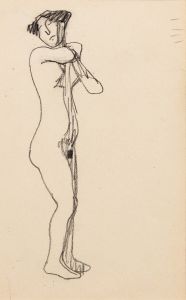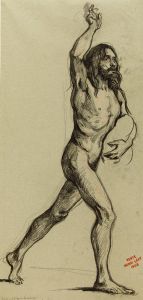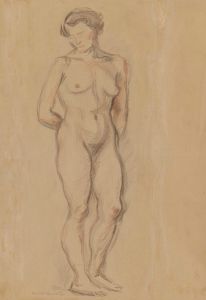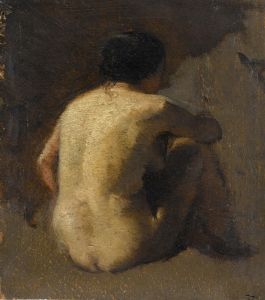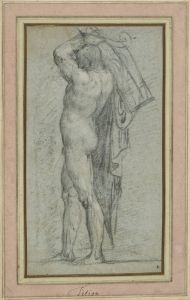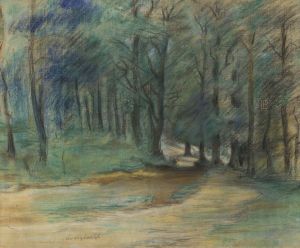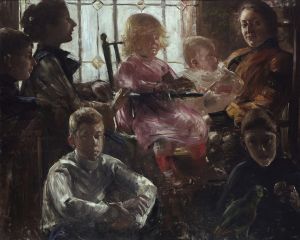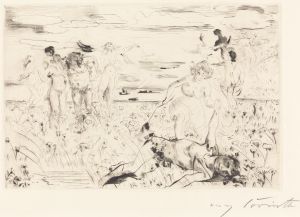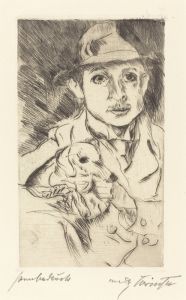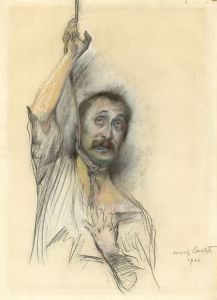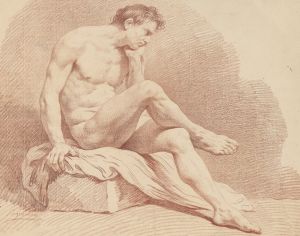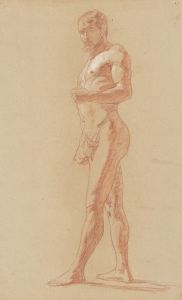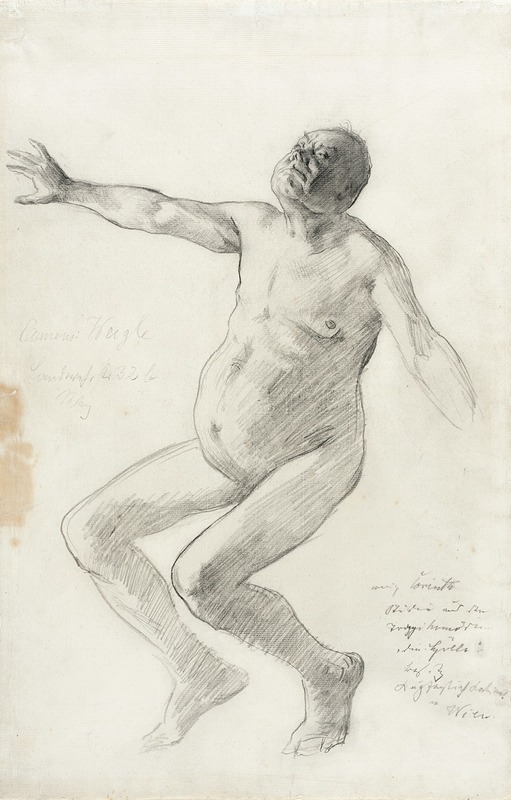
Study of a Nude Man Falling Backwards
A hand-painted replica of Lovis Corinth’s masterpiece Study of a Nude Man Falling Backwards, meticulously crafted by professional artists to capture the true essence of the original. Each piece is created with museum-quality canvas and rare mineral pigments, carefully painted by experienced artists with delicate brushstrokes and rich, layered colors to perfectly recreate the texture of the original artwork. Unlike machine-printed reproductions, this hand-painted version brings the painting to life, infused with the artist’s emotions and skill in every stroke. Whether for personal collection or home decoration, it instantly elevates the artistic atmosphere of any space.
Lovis Corinth was a German painter and printmaker whose work spans the transition from Impressionism to Expressionism. He is known for his vigorous brushwork and vibrant use of color, often exploring themes of mythology, history, and the human figure. One of his notable works is "Study of a Nude Man Falling Backwards," which reflects his interest in the human form and dynamic movement.
"Study of a Nude Man Falling Backwards" is an example of Corinth's exploration of the human body in motion. The painting captures a moment of dynamic tension, as the subject appears to be caught in the act of falling. This work is characterized by Corinth's expressive brushstrokes and his ability to convey movement and emotion through the depiction of the human form. The painting is rendered with a sense of immediacy and energy, typical of Corinth's style during this period.
Corinth's approach to the nude figure was influenced by his academic training and his exposure to various artistic movements. He studied at the Academy of Fine Arts in Munich and later in Paris, where he was exposed to the works of the Impressionists. This exposure is evident in his use of color and light, which adds a sense of vitality to his paintings. In "Study of a Nude Man Falling Backwards," Corinth employs a palette that emphasizes the play of light across the figure's body, enhancing the sense of movement and physicality.
The painting also reflects Corinth's interest in the psychological aspects of his subjects. The expression and posture of the figure suggest a moment of vulnerability and tension, inviting viewers to contemplate the emotional state of the subject. This focus on the psychological dimension of his subjects is a hallmark of Corinth's work, distinguishing him from other artists of his time.
Throughout his career, Corinth's style evolved, particularly after a stroke in 1911 that affected his ability to paint. This event led to a shift in his technique, with his later works exhibiting a more expressive and less restrained approach. "Study of a Nude Man Falling Backwards" predates this period, showcasing Corinth's earlier style, which balances academic precision with a burgeoning expressiveness.
Corinth was a prominent figure in the Berlin Secession, an art movement that sought to break away from traditional academic art and embrace more modern, avant-garde approaches. His involvement in this movement positioned him as a key figure in the development of modern art in Germany. His works, including "Study of a Nude Man Falling Backwards," contributed to the dialogue between traditional and modern art practices during the late 19th and early 20th centuries.
Today, Lovis Corinth is recognized as a significant figure in the history of art, with his works held in major collections worldwide. "Study of a Nude Man Falling Backwards" remains an important example of his exploration of the human form and his contribution to the evolution of modern art. Through his dynamic compositions and expressive use of color, Corinth continues to be celebrated for his ability to capture the complexity and vitality of the human experience.





